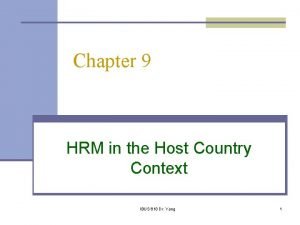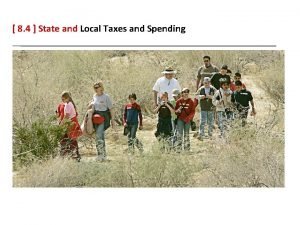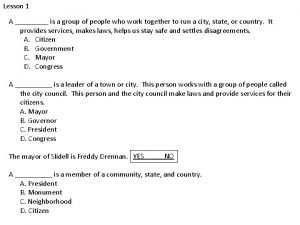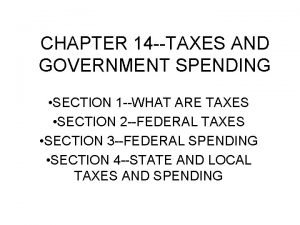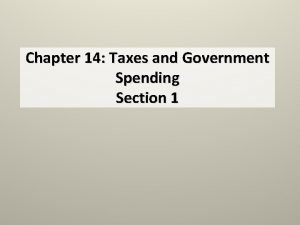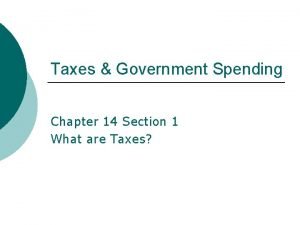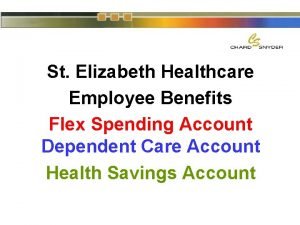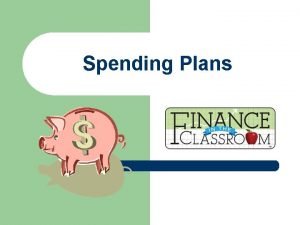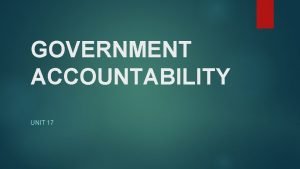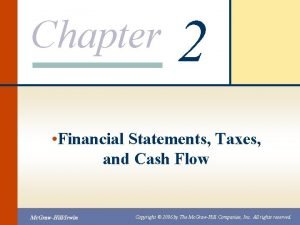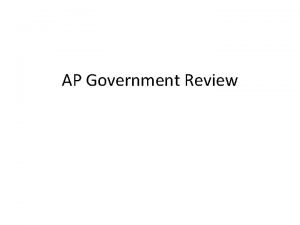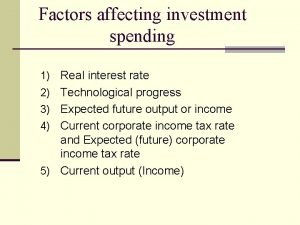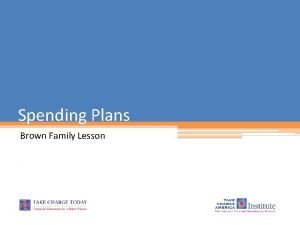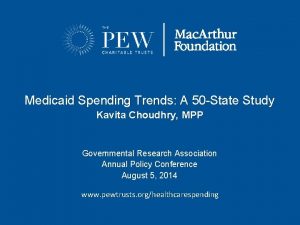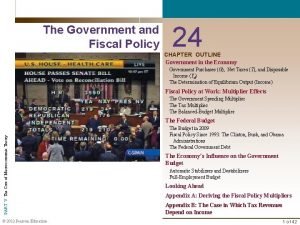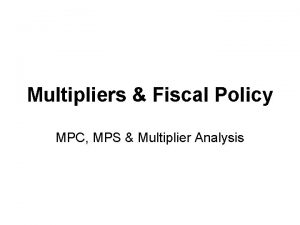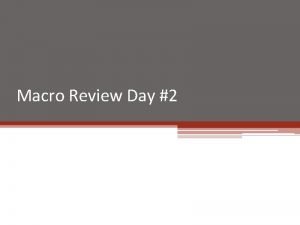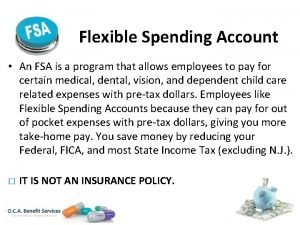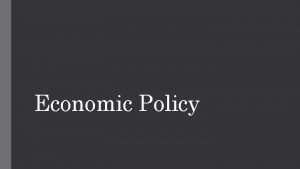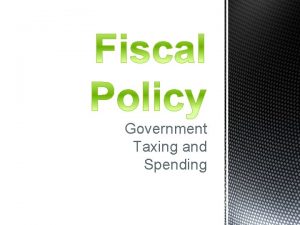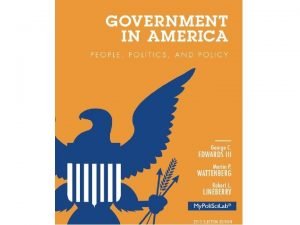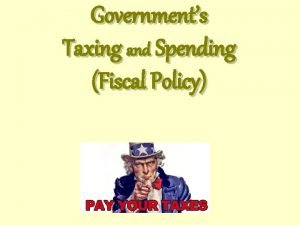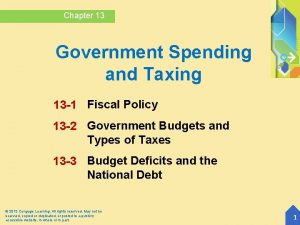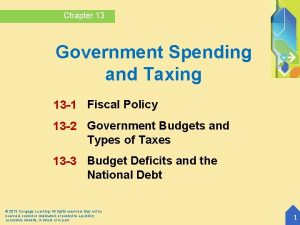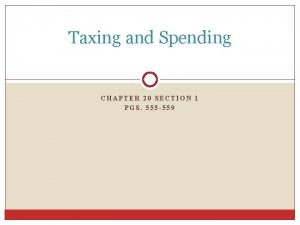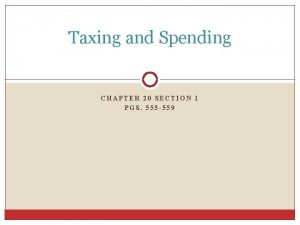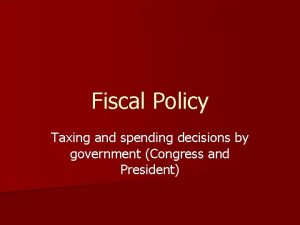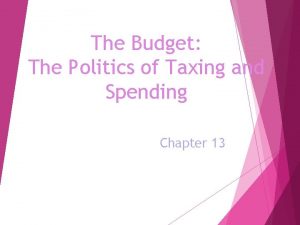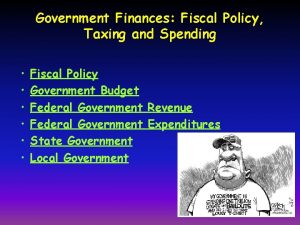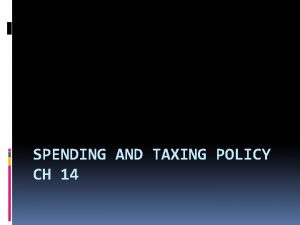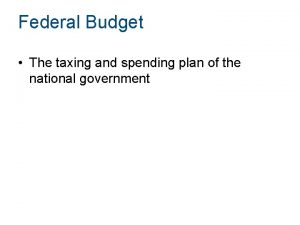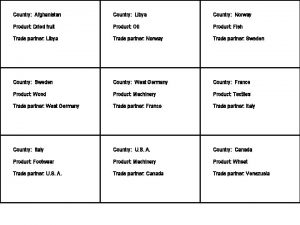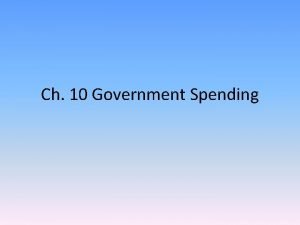Taxing and Spending Our country was founded upon











































































- Slides: 75

Taxing and Spending Our country was founded upon an economic issue

What is more important?

Democrats and Republicans see things differently…and don’t play well together.

Two questions are central to public policy… • Who bears the burdens of paying?

Who receives the benefits?

The Budget • A policy document allocating burdens (taxes) and benefits (expenditures) • Taxes and spending

What is a budget? Revenues (taxes) - Expenditures

When Expenditures Exceed Revenues: We have a deficit…

Balancing the Federal Budget (or at least reducing the annual deficit to a manageable size) The Problem: 2016 Spending - $3. 84 Trillion 2016 Revenues - $ 3. 27 Trillion _________ $587 Billion Deficit Is it time to panic?


Revenues

16 th Amendment • • 1913 Allowed Congress to levy an income tax. IRS was set up to collect/monitor tax law IRS Favorability rating: 43 - 45% (depending on income) – Obama: 48% (78% - 48%) – Congress 14%, (84% - 9%) • April 15 th (tax day) • Corporations also pay “income tax” but their rate is substantially lower than individuals

What is the OECD? Organization for Economic Cooperation and Development An organization that acts as a meeting ground for 34 countries which believe strongly in the free market system, The OECD provides a forum for discussing issues and reaching agreements, some of which are legally binding.

Corporate Income Tax – Paid Only on Profit • Declining since the 1950’s • Rate on paper is highest in the developed world • Effective rate (what they actually pay AFTER deductions, exemptions, etc. ) is 13. 4%. OECD: Organization for Economic Cooperation and Development, 34 member nations including USA.

• 130 million individual income tax payers per year • Audits – 1 million per year

• Other plans have been proposed (Herman Cain’s 9/9/9 plan for example) • Flat taxes – sounds good – but they are regressive • No income tax – all sales tax – again regressive

Social Insurance Taxes (aka “payroll taxes”) Current rates • Social Security – 6. 2% from employer (no change) – 6. 2% from employee (up from 4. 2% with fiscal cliff deal) – Up to a ceiling of $118, 500 (no change from last year) • Medicare – 1. 45% (no cap)

Borrowing • T-Bills (Treasury Bonds) – anyone can buy them, corporations, other countries, Aunt Sally…Sold by the Fed • US Savings Bonds – same idea – longer pay out

Total Current Debt (Accumulated Over Time) $20. 1 Trillion • More than our annual GDP (18. 1 trillion) – We’ve only topped 100% once before, during WWII – Over $56, 375 person • Our total debt is now 104. 17% of our GDP – highest rate was in 1946 at 121. 70%


The Debt Limit - $18. 1 Set by Congress – newest trick –suspension of debt – allows spending without actually voting to raise debt ceiling. Have until March 2017 No constitutional mandate Not raising it would result in the USA defaulting on outstanding Treasury Bonds. Catastrophic global economic consequences Newsroom Clip

Taxes and Public Policy • What is a loophole vs. an expenditure? • A loophole is seen as a negative and benefits one group more than another….

The government sets up some tax breaks to encourage certain behavior To encourage home ownership…interest on your mortgage is deductable Rather than the government supporting charitable organizations – individuals can choose what they want to support and get a deduction for doing so.

All revenues lost from loopholes, exemptions, exclusions and deductions are EXPENDITURES • Should you pay less tax because you have a kid? • Should you pay less tax because you invested in a retirement account? • Should you pay less tax because you own a home? • Every $ YOU save – is a COST (expenditure) to the government.

Many calls for tax reform and tax reduction accompany the preparation of individual income taxes. • Our tax code is seriously complicated • People hate paying taxes

Tax Reform Act of 1986 • One of the most sweeping alterations in federal tax policy history.

Federal Expenditures Total figure for spending: 4. 1 Trillion Dollars

The Budget is Divided Mandatory spending set by law: Entitlements *Social Security, Medicare, Medicaid, CHIP, Veterans’ Benefits, Food Stamps, and more 65% of the projected 2015 budget Discretionary spending—can be changed without changing laws 29% of 2015 budget 55% of that is military spending Leaves 13. 5% of the budget for EVERYTHING else. *Interest on the debt – 6 %

For the purposes of these slides, we will be talking about FEDERAL taxes. Federal tax revenue, as you can see, is still going up.

As a percent of the economy, though, federal tax revenue is actually well below average--only 17% of GDP.

Of course, federal spending is off the charts.

No mystery, then, why we've developed such a budget deficit in recent years.

The good news is. . . the solution to our budget deficit is obvious. We have to raise taxes as a percent of GDP (blue) and/or cut spending as a percent of GDP (red). And given that there are 320 million of us who have to agree, we're going to have to compromise: A little of both.

What Does the Public Want • • Cut my taxes Balance the budget Cut out wasteful spending Provide all the services that I’ve come to expect


Military Industrial Complex • Coined by President Eisenhower • http: //youtu. be/8 y 06 NSBBRt. Y

Historical Military Spending As a percentage of the overall budget – it has gone down (but the budget has gone up. )

In billions of 2014 dollars – it has gone up

As a percentage of GDP – it fluctuates but not at it’s highest level

So just how much does that military stuff cost? • http: //www. militaryeducation. org/militaryequipment/

Military Spending is Discretionary • It fluctuates as need and technology dictate • It is always a substantial part of the budget • It is no longer the major driver in the budget Procurement: The purchasing of military hardware

The Rise of the Social Service State • Social Security Act: Purpose originally to provide a minimal level of sustenance to older Americans… • Disability Insurance: added in the 1950’s • Medicare: Added in 1965

An Intergenerational Contract

Pending Social Security Crisis? 20182042 • Pay as you go system – benefits paid out this year from funds collected this year – today’s workers pay for today’s beneficiaries • Baby boomers bubble • Leaving only 2 active workers to pay for each recipient • Borrowing from the social security trust fund since 1982 • By 2034, S. S. will no longer have a surplus – time to pay up

Medicare Payroll Tax • 1. 45% + 1. 45% (paid by the employer) • 65+ all Americans Medicare Prescription Plan added in 2004 without additional funding by Bush Administration

Why Such Unparalleled Growth? • Incrementalism

Not always the case

Some Expenditures are “Uncontrollable” • 2/3 of the budget is really NOT like an allowance, where you get a certain amount of money and have to make it work

2/3 of the budget is an equation The government guarantees benefits

To those who fit “the eligibility”

Biggest Uncontrollable Expenditure Social Security/Medicare

The Budget • Congress has the “power of the purse” • The budget is a statement of political priorities • “Who gets what and when” • 65% of the budget is “uncontrollable” – entitlement programs. Can’t make cuts without changing the law that created the program

Who are the Interested Parties?

• The Departments and Agencies http: //www. usa. gov/directory/federal/index. shtml

• The OMB – responsible to the President but have considerable independence from the President – largely create the President’s budget

• The President

• The Tax Committees in Congress – House Ways and Means – Senate Finance Committee

• The Budget Committees and the CBO – Senate Budget Committee – House Budget Committee

• The subject matter committees Some Congressional committees deal with particular issues or populations. These committees try to get laws passed and money allocated for their “pet projects. ”

• The Appropriations Committees and their subcommittees – Get requests from agencies and decide who gets what.

• Congress as a whole – Constitutionally required function of Congress is to approve taxes and expenditures. Each member wants to make sure they get funding for their constituents.

• The GAO – Government Accountability Office They audit/monitor/and evaluate how agencies are spending the allocated funds.

1921 – Budget and Accounting Act • For the first time it required president’s to submit a budget • Reorganized under Nixon – becomes the OMB • Head of the OMB is a presidential appointment that must be approved by the Senate • President must submit a budget by the first Monday in February….

The Budget Process Starts with the Office and Management and Budget Preparing the President’s Budget Proposal Obama’s 2015 - 2016 Budget Arrives to the Capitol Building Dead on Arrival?

The Process OMB prepares a budget 18 months early 1. Spring: Agencies and departments put in requests to the OMB 2. By summer – the President has made his priorities and targets known 3. Fall: Agencies are asked to submit detailed estimates to OMB –submitted to president by OMB – president revises – OMB let’s agencies know of outcome 4. Winter: Agencies revise - OMB reviews and drafts the president’s budget message 5. OMB gets presidents approval/final revisions 6. Budget submitted to Congress

Congressional Budget and Impoundment Control Act of 1974 • Goal to make Congress less dependant upon president’s budget. Three things: – A fixed budget calendar – timetable is mandated by law – A budget committee in each house – must recommend target figures to Congress by 4/15 total size of budget agreed upon – The CBO established

• Feb: CBO gets POTUS budget – passes it along with recommendations to House and Senate Budget Committees • April: Both houses must pass a budget resolution upon which they agree. Sets the maximum amount that can be spent for the WHOLE budget. • Laws sometimes need to be changed to meet budget resolution (remember 65% of the budget is mandated by law)

Authorization Bills • Authorizes rules for government programs – like eligibility ages for collecting Social Security • Sets the maximum spending amount that may be spent

Appropriations Bill • Funds the programs authorized in the authorization bill • Congress “authorizes new health facility • Must now fund it • Passes appropriations bill for funds • Cannot give MORE than authorization bill but can give less

Reconciliation • After all is said and done – there may be (likely will be) more money “authorized” than the original budget resolution allowed for. • $3. 9 trillion allowed in resolution • $4. 0 trillion authorized and appropriated • MUST reconcile – (reduce)

So how successful are these reforms? • Well – now Congress looks at the budget as a whole picture – that is good • Still in the red • Continuing resolutions allow agencies to spend at “last year’s rate” • Omnibus bills – instead of 13 appropriations bills – one HUGE bill – no one can read it all and what gets snuck in?


Who did it first? • Gramm-Rudman-Hollings Balanced Budget and Emergency Deficit Control Act (1987) – Mandated maximum deficit levels to get budget balanced by 1993 – Failure to meet each years goal – sequestration – Tossed out in 1990 – new focus - concentrate on spending (don’t increase)

So how did that work? Any increase in any one of these three areas (defense, domestic, international) had to be matched with a cut in that area. If not done – sequestration was still the threat. Pay as you go programs? Expansion of benefits had to be paid for by cutting something or increasing taxes.

Clinton’s 1 st Budget • Cut the deficit • Eventually did create a surplus • Most agree that this was due to a booming economy – not so much Congress. • Both sides claim to be responsible for the surplus.
 Interpretation and construction
Interpretation and construction Host country and home country
Host country and home country Intra country vs inter country
Intra country vs inter country Once upon a time there was a little red fox
Once upon a time there was a little red fox State and local taxes and spending
State and local taxes and spending Awareness of ourselves and our environment is
Awareness of ourselves and our environment is Our awareness of ourselves and our environment.
Our awareness of ourselves and our environment. Awareness of ourselves and our environment is
Awareness of ourselves and our environment is Our awareness of ourselves and our environment.
Our awareness of ourselves and our environment. Macbeth act 4 scene 1 analysis
Macbeth act 4 scene 1 analysis Sm sultan class 4 question answer
Sm sultan class 4 question answer Paced decision making
Paced decision making The map maker who name our country as maniolas.
The map maker who name our country as maniolas. Is our country
Is our country Figurative language in upon the burning of our house
Figurative language in upon the burning of our house Anne bradstreet upon the burning of our house
Anne bradstreet upon the burning of our house The old lane estate was a
The old lane estate was a Anne bradstreet upon the burning of our house
Anne bradstreet upon the burning of our house Chapter 14: taxes and government spending section 1
Chapter 14: taxes and government spending section 1 Chapter 14 taxes and government spending
Chapter 14 taxes and government spending John and marcia monthly spending plan 1 answer key
John and marcia monthly spending plan 1 answer key Why is evaluating and adjusting a spending plan important
Why is evaluating and adjusting a spending plan important Chapter 14 taxes and government spending
Chapter 14 taxes and government spending Thinking language and intelligence
Thinking language and intelligence Our census our future
Our census our future Bernadette farrell christ be our light
Bernadette farrell christ be our light Marcus aurelius our life is what our thoughts make it
Marcus aurelius our life is what our thoughts make it We bow our hearts
We bow our hearts Our census our future
Our census our future Our life is what our thoughts make it
Our life is what our thoughts make it The poem money madness is written by
The poem money madness is written by God our father christ our brother
God our father christ our brother Our future is in our hands quotes
Our future is in our hands quotes Croatian meteorological and hydrological service founded
Croatian meteorological and hydrological service founded Latvian environment, geology and meteorology centre
Latvian environment, geology and meteorology centre Cash flow to creditors
Cash flow to creditors Chard-snyder fsa
Chard-snyder fsa What is spending
What is spending Moderate spending
Moderate spending Multiplier formula
Multiplier formula Autonomous expenditure formula
Autonomous expenditure formula Government spending multiplier formula
Government spending multiplier formula Government departments are accountable their spending
Government departments are accountable their spending Net capital spending
Net capital spending Spending plan shake up
Spending plan shake up Net fixed assets
Net fixed assets Deficit spending exists when
Deficit spending exists when Government spending multiplier formula
Government spending multiplier formula Uncontrollable spending definition ap gov
Uncontrollable spending definition ap gov Factors affecting investment spending
Factors affecting investment spending Convert spending into earning logo
Convert spending into earning logo Uncontrollable spending ap gov
Uncontrollable spending ap gov Ers tex flex
Ers tex flex The brown family spending plan
The brown family spending plan Ompetency
Ompetency Spending vocabulary
Spending vocabulary Spending vocabulary
Spending vocabulary Csi corporate card
Csi corporate card Opposite of spending
Opposite of spending Medicaid spending
Medicaid spending Excessive military spending in rome
Excessive military spending in rome Mental health spending
Mental health spending @soup_nn
@soup_nn 24 chapter outline
24 chapter outline Why did the struggle for equal rights intensify
Why did the struggle for equal rights intensify Maya's spending plan answers
Maya's spending plan answers Multiplier equation
Multiplier equation Ratchet effect economics
Ratchet effect economics Multiplier effect formula
Multiplier effect formula What is a flexible spending account
What is a flexible spending account Entitlement spending
Entitlement spending Spending plan shake up
Spending plan shake up Government spending multiplier
Government spending multiplier Savings investment spending identity
Savings investment spending identity When was hinduism founded
When was hinduism founded Why did james edward oglethorpe founded georgia
Why did james edward oglethorpe founded georgia

